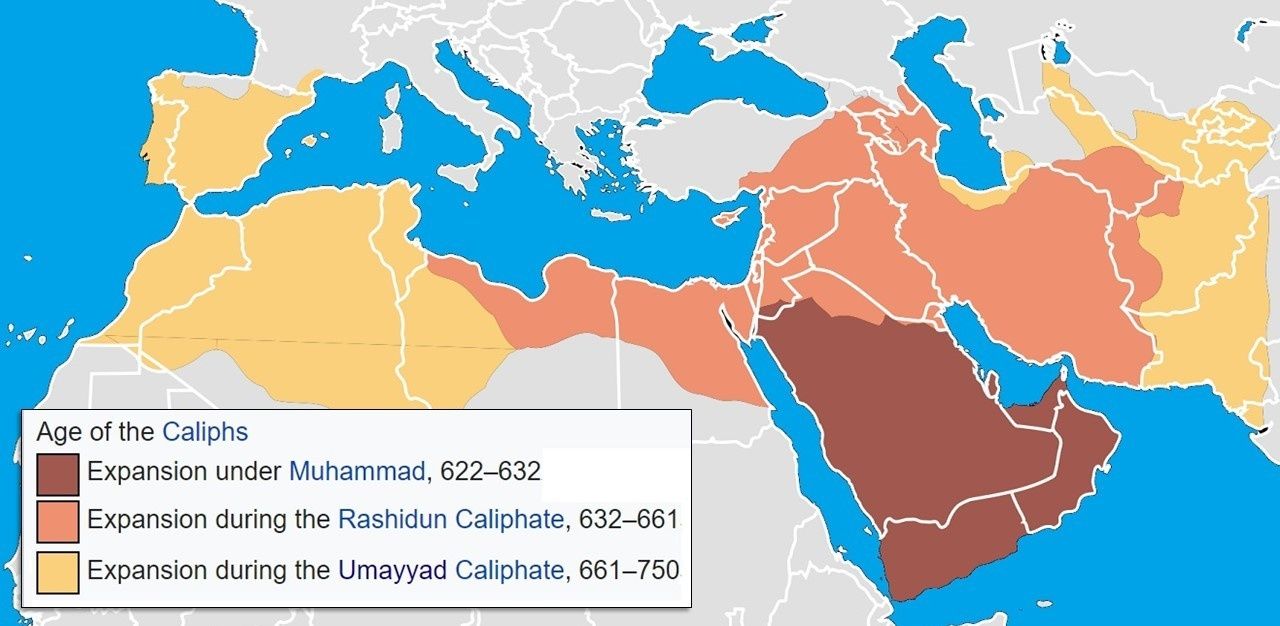The Growth and Spread of Islam

With over 1.5 billion followers in over 232 countries, Islam has grown to be one of the world’s largest religions. The Middle East and North Africa have the highest concentration of Muslims, with the Asia-Pacific containing the highest population of Muslims in the world.
The growth and spread of Islam began when the Prophet Muhammad began sharing his divine revelations and spreading messages he received from Allah (God). He and his followers were persecuted and fled to the neighboring city of Medina in 622.
In Medina, Islam grew, and after much conflict Muhammad and his followers were able to return to Mecca in 630. Soon after, Mecca would become the center of Islam. After Muhammad’s death in 632, the teachings of Islam spread rapidly to many people and places in the Middle East.
The period following Muhammad’s death is known as the Rashidun Caliphate and lasted from 632-661. During this period a Muslim administration and government was established and ruled the Middle East.
The Caliphate was governed by The Righteous Caliphs, or spiritual leaders. By 644, these four leaders helped Islam spread and grow far beyond the Middle East through conquests of major cities like Baghdad, Jerusalem, and Alexandria. The Muslims would also go on to conquer North and Western Africa, effectively taking control over much of the Byzantine and Persian territory.
The third Caliph Uthman created a version of the Quran that became standardized and widely used throughout the Islamic world. He helped to establish new schools that taught the Arabic language and Islamic studies. It was also during this period that hundreds of mosques were built throughout the empire.

After the death of the last caliph in 661, the Umayyad Caliphate took control of the empire and ruled until 750. Historians regard this caliphate as the most powerful and expansive of the caliphs. The Umayyad Caliphate grew the Islamic Empire to its peak and expanded its control from the Middle East to parts of Asia, India, Northern Africa and parts of Europe.
The growth of Islam in these areas helped unite nomadic people into a more unified culture by creating common currency, making Arabic the official language, and standardizing measurements. This led to a “Golden Age” during the Abbasid Dynasty which came to power by overthrowing the Umayyad in 750.
During this period science, math, astronomy, medicine and literature flourished. Libraries and schools were built and arts and architecture thrived. This period lasted to 1258.